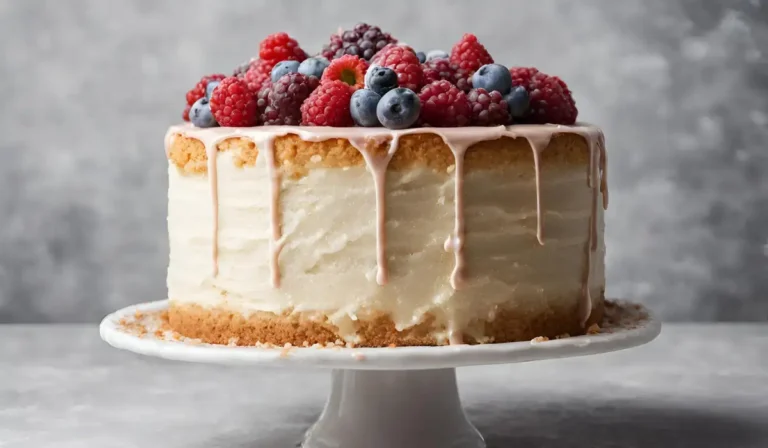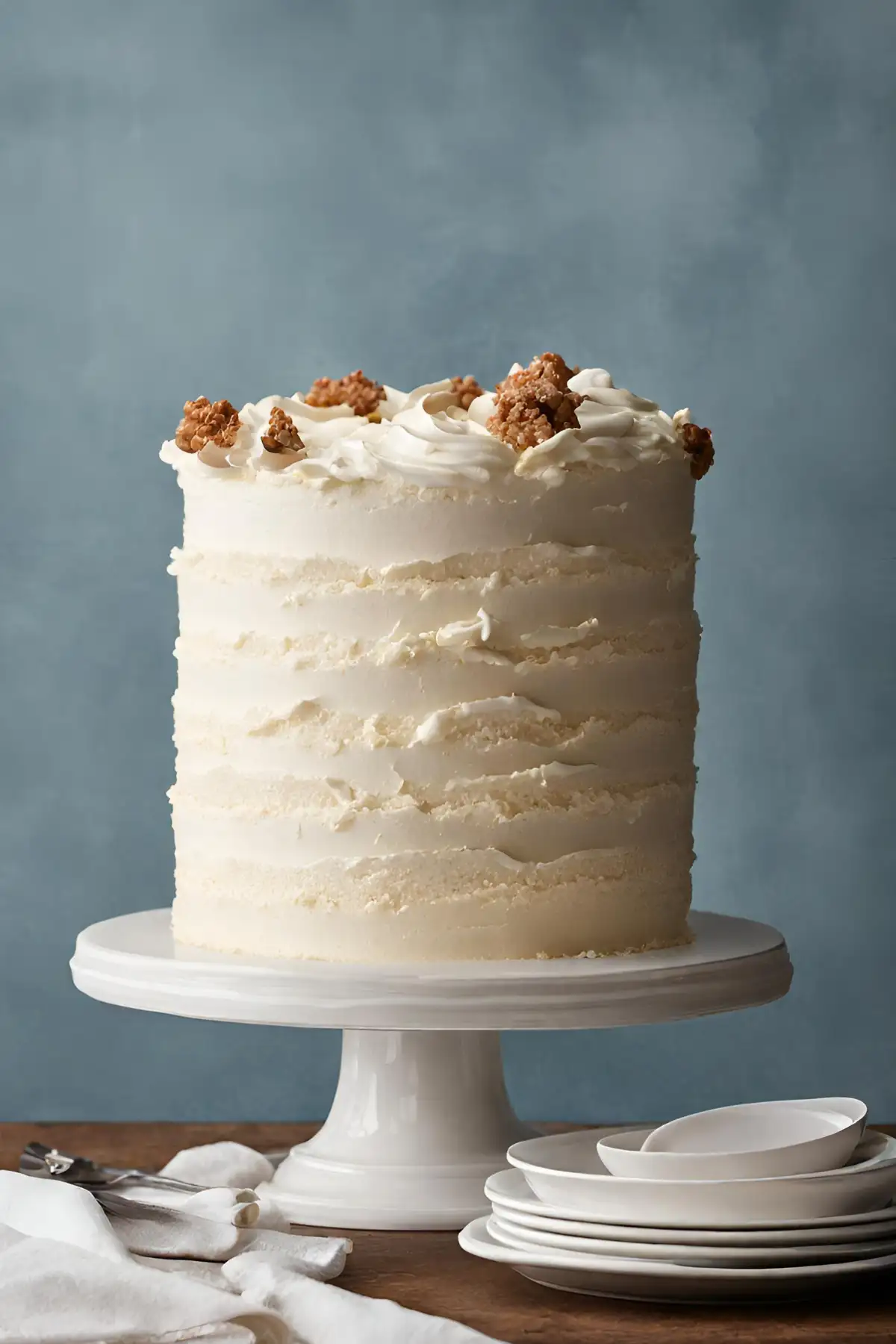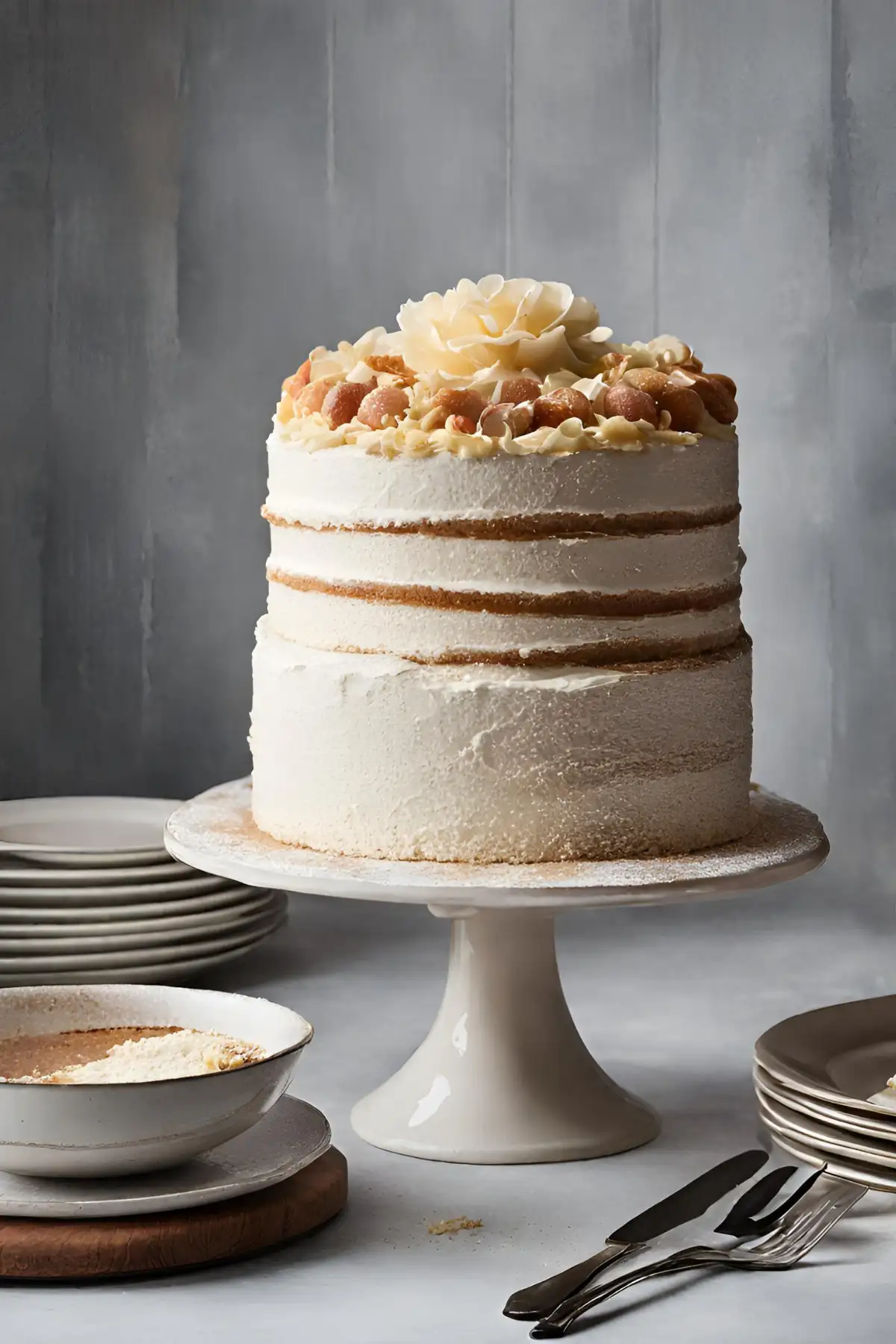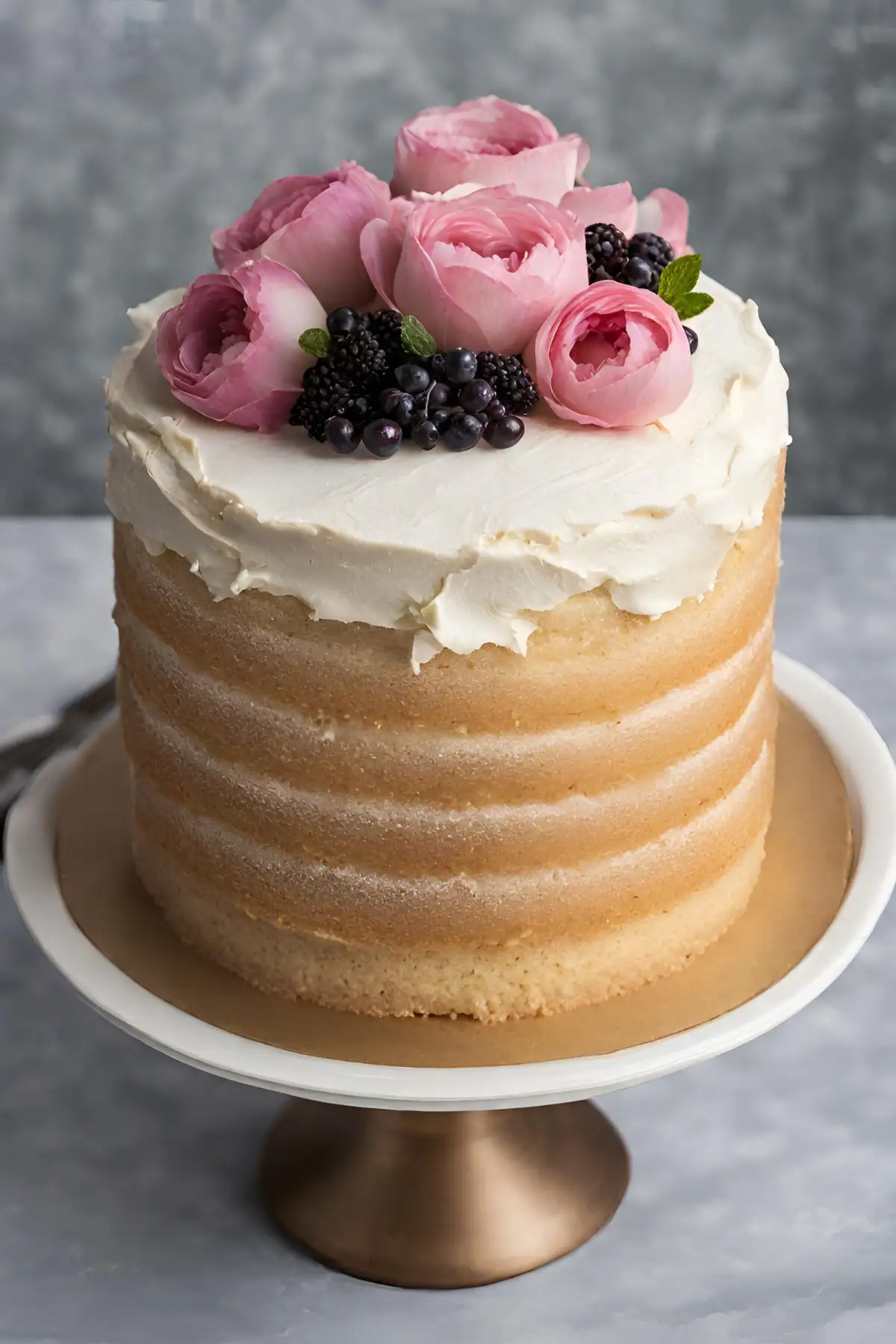How to Make Your Cake Rise Higher: Expert Tips for Fluffy Cakes
Baking a cake that rises beautifully is a goal for many home bakers. A well-risen cake is not just about aesthetics; it’s also about texture and taste. In this article, we’ll dive into the techniques and tips that can help your cakes reach new heights.
Understanding the Basics of Cake Rising
The art of baking a cake that rises perfectly involves a blend of chemistry and culinary skills. The key to achieving that desirable fluffy texture is understanding how leavening agents work. Leavening agents are substances used in dough and batter that cause a foaming action. This action leads to the expansion or rising of the mixture, thanks to the gases produced during the process. The most commonly used leavening agents in cake baking are baking soda, baking powder, and eggs. Each plays a distinct role in the baking process, contributing to the overall texture, volume, and taste of the cake.
Baking Soda and Baking Powder: The Chemical Leaveners
Baking soda (sodium bicarbonate) and baking powder are chemical leaveners that release carbon dioxide gas when they react with other ingredients. The main difference between them lies in the conditions required for the reaction to take place.
-
Baking Soda requires the presence of an acid (such as lemon juice, yogurt, buttermilk, or vinegar) and moisture to start the chemical reaction that produces carbon dioxide gas. The production of this gas creates air bubbles in the batter, which expand in the oven’s heat, causing the cake to rise.
-
Baking Powder is essentially baking soda mixed with a dry acid (like cream of tartar) and a drying agent (like starch). It is available in two types: single-acting and double-acting. Single-acting baking powder reacts and produces gas bubbles when it gets wet. Double-acting baking powder produces gas in two phases: once when wet and again when exposed to heat. This makes double-acting baking powder more reliable for a consistent rise, as it starts working at room temperature and gets a second boost in the oven.
Eggs: The Biological Leavener
Eggs are considered a biological leavener because they can trap air during the mixing process, which expands in the oven and contributes to the rising of the cake. The proteins in eggs also coagulate when heated, providing structure to the cake. When eggs are whipped, they introduce air into the batter, and the air cells expand in the heat of the oven, aiding in leavening. The fat in the yolks helps to emulsify the mixture, contributing to the cake’s moistness and tender texture.
Choosing the Right Ingredients
To ensure the best rise in your cake, it’s crucial to use fresh leavening agents. The effectiveness of baking soda and baking powder can diminish over time, so it’s advisable to check their potency if they’ve been in your pantry for a while. A simple test for baking powder is to mix a spoonful in a cup of hot water; if it bubbles vigorously, it’s still active. For baking soda, mix it with a few drops of vinegar; if it fizzes, it’s good to use.
Understanding the role of each leavener and choosing the right, fresh ingredients will greatly improve the quality of your cakes, making them rise beautifully and taste delicious.
Practical Tips for a Higher Cake Rise
Achieving a higher rise in your cake is not just about the ingredients; the technique plays a crucial role. From the initial mixing to the final baking, each step needs careful attention to detail. Here are some practical tips to help your cakes reach their full potential:
Following the Recipe with Precision
Baking is a science, and success often hinges on precision. Unlike cooking, where there’s room for improvisation, baking requires strict adherence to the recipe. Measurements should be exact, and it’s advisable to follow the steps as laid out in the recipe without deviation. Using measuring cups for dry ingredients and liquid measuring cups for wet ingredients can make a significant difference in accuracy.
Creaming Butter and Sugar
The creaming method is a foundation for many cake recipes because it introduces air into the batter, contributing to a lighter, more airy texture. To cream butter and sugar effectively:
- Start with butter at room temperature; it should be soft but not melted.
- Beat the butter and sugar together on medium speed until the mixture is light in color and fluffy in texture. This process can take several minutes.
- Be cautious not to over-cream. While it’s important to incorporate air, overdoing it can lead to the butter becoming too soft, which might cause the cake to collapse.
The Art of Folding Ingredients
When adding flour or dry ingredients to your batter, the goal is to maintain as much air as possible. This is where folding comes in:
- Use a spatula to gently fold the flour into the batter in a figure-8 motion. This technique helps preserve the air bubbles created during the creaming process.
- Be gentle and patient; vigorous stirring can deflate the batter and affect the cake’s rise.
Filling the Cake Pan Correctly
The amount of batter in the pan influences how well a cake rises:
- Fill your cake pans to about ⅔ full. This allows enough space for the cake to expand without overflowing.
- Consistency is key. If baking multiple layers, ensure each pan has an equal amount of batter for a uniform rise.
Monitoring Oven Temperature and Baking Time
An accurate oven temperature is crucial for even baking and optimal rise:
- Preheat your oven to the temperature specified in the recipe. This ensures that the cake starts baking at the right temperature for proper rise.
- Consider using an oven thermometer to verify your oven’s accuracy. Ovens can vary, and the actual temperature may differ from what’s displayed.
- Avoid opening the oven door frequently as this can lead to temperature fluctuations that affect the cake’s rise.
- Bake the cake for the recommended time before checking for doneness. A premature check can cause heat loss and affect the rise.
By incorporating these practical tips into your baking routine, you’ll be better equipped to achieve cakes that rise beautifully, offering both visual appeal and delightful texture.
Advanced Strategies for Enhanced Cake Rise
For those looking to elevate their cake-baking skills even further, mastering advanced leavening techniques and understanding how to troubleshoot common issues can lead to consistently better results. Here’s a closer look at some sophisticated strategies for enhancing the rise of your cakes:
Utilizing Advanced Leavening Techniques
-
Beat Egg Whites Separately: One of the most effective methods to ensure a light and airy cake is to beat the egg whites separately until stiff peaks form, and then gently fold them into the main batter. This technique introduces a significant amount of air into the batter, contributing to a fluffier texture. It’s particularly useful for sponge cakes and other delicate bakes.
-
Use Acidic Ingredients: Ingredients like buttermilk or yogurt not only add moisture and richness to the cake but also enhance the leavening effect when combined with baking soda. The acid in these ingredients reacts with the baking soda, producing additional carbon dioxide and thus further aiding in the rise of the cake. This can be especially beneficial in recipes that call for a dense batter.
Troubleshooting Common Cake Rising Issues
-
Flat Cake: If your cakes are consistently turning out flat, the first thing to check is the freshness of your leavening agents. Both baking powder and baking soda lose their potency over time, which can dramatically affect the rise of your cake. As a rule of thumb, replace these ingredients every six months to ensure they’re effective.
-
Uneven Rise: An uneven rise can often be attributed to inconsistent oven temperature. If one side of your cake rises more than the other, it might be due to hot spots within your oven. Using an oven thermometer can help you verify that your oven is heating correctly and evenly. Additionally, rotating the cake midway through baking can help achieve a more uniform rise.
Additional Tips for an Enhanced Cake Rise
-
Optimal Mixing Technique: Overmixing the batter can develop the gluten too much, leading to a dense cake. Mix just until the ingredients are incorporated. For recipes where you fold in egg whites, do so gently to avoid deflating them.
-
Proper Pan Preparation: Use the right size pan as recommended in the recipe. Too big of a pan can spread the batter too thin, affecting the rise, while too small of a pan can cause the cake to overflow. Also, properly greasing and flouring the pan, or using parchment paper, can prevent the cake from sticking, allowing it to rise smoothly.
-
Baking Immediately: Once the batter is mixed, especially if it involves chemical leaveners that react to moisture, it’s important to get it into the oven as quickly as possible. Delaying can cause the batter to lose some of the air bubbles and carbon dioxide, leading to a reduced rise.
By incorporating these advanced techniques and troubleshooting tips into your baking practice, you’ll be well on your way to creating cakes with an impressive rise, perfect texture, and delicious taste.
FAQs
- What ingredient makes a cake rise?
The primary leaveners are baking powder and baking soda. Eggs can also contribute to the rising process. - What causes a cake not to rise?
Common issues include outdated leavening agents, incorrect oven temperature, and improper mixing. - How can I make a sponge cake rise more?
Gentle mixing and proper folding of ingredients are crucial. Also, verify your oven temperature for accuracy.
Conclusion and Final Thoughts
In summary, achieving a higher rise in your cakes involves a mix of science and skill. From selecting the right ingredients to mastering the art of mixing and baking, each step is vital. Practice and patience are key, and with these tips, you’re on your way to baking cakes that are not only delicious but also impressively tall and fluffy.




